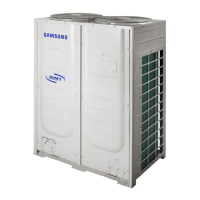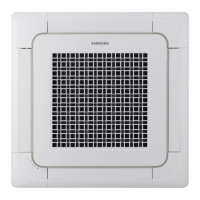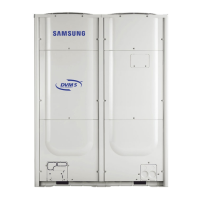37
English
Installation manual
Insulating the refrigerant pipes
Once you have checked that there are no leaks in the system,
you can insulate the piping and hose.
1 To avoid condensation problems, place Acrylonitrile
Butadien Rubber separately around each refrigerant pipe.
EPDM, NBR
No gap
NOTE
• Always make the seam of pipes face upwards.
2 Wind insulating tape around the pipes and drain hose
avoiding to compress the insulation too much.
3 Finish wrapping insulating tape around the rest of the
pipes leading to the outdoor unit.
4 The pipes and electrical cables connecting the indoor
unit with the outdoor unit must be fixed to the wall with
suitable ducts.
Be sure to overlap the
insulation
Indoor unit
Insulation cover pipe
Insulation pipe
CAUTION
• Must fit tightly against body without any gap.
• All refrigerant connection must be accessible, in order
to permit either unit maintenance or removing it
completely.
5 Select the insulation of the refrigerant pipe.
• Insulate the gas side and liquid side pipe referring
to the thickness according to the pipe size.
•
is the standard condition.
– If installing in a high humidity condition, use
one grade thicker insulator by referring to the
table below.
– If installing in an unfavorable conditions, use
thicker one.
• Insulator’s heat-resistance temperature should be
Pipe Pipe size
Insulation Type (Heating/Cooling)
Remarks
Standard
[30°C, 85%]
High humidity
[30°C, over 85%]
EPDM,NBR
Liquid
pipe
Internal
temperature
is higher
Gas
pipe
When installing insulation in places and conditions below, use
the same insulation that is used for high humidity conditions
<Geological condition>
• High humidity places such as shoreline, hot spring, near
lake or river, and ridge (when the part of the building is
covered by earth and sand.)
<Operation purpose condition>
• Restaurant ceiling, sauna, swimming pool etc.
<Building construction condition>
• The ceiling frequently exposed to moisture and cooling
is not covered.
e.g. The pipe installed at a corridor of a dormitory and studio
or near an exit that opens and closes frequently.
• The place where the pipe is installed is highly humid
due to the lack of ventilation system.

